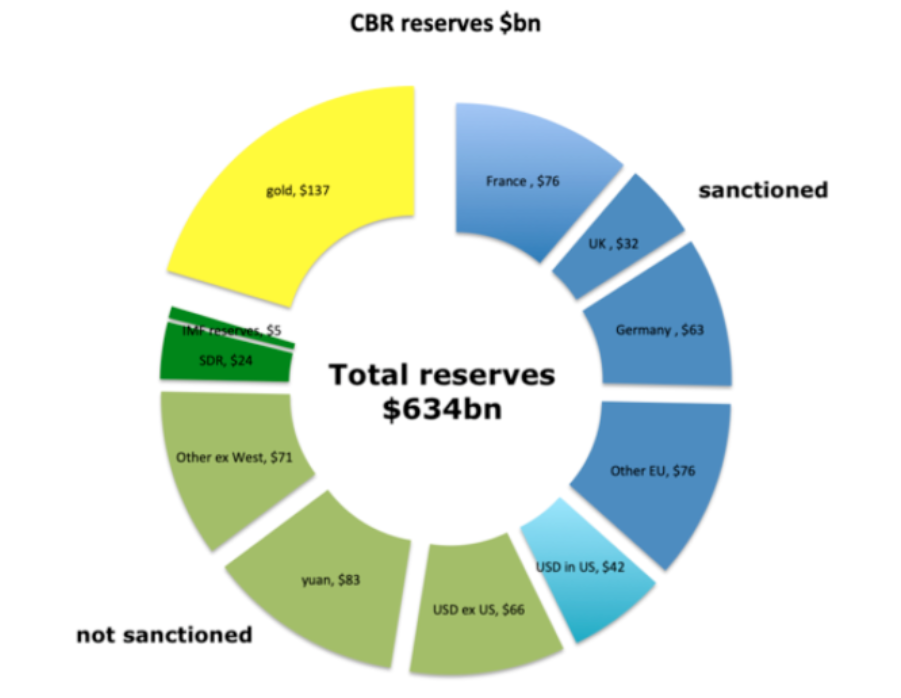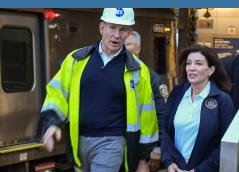The crushing issue of high inflation caused by central banks can no longer be downplayed. Public displeasure at the increasing currency devaluation has now forced monetary policy makers to act. The US Federal Reserve (Fed) has raised its key interest rate to 1 percentage point. Many other central banks have also reacted—such as the Bank of England, the Central Bank of Australia, and the Central Bank of Sweden. Even the ponderous European Central Bank (ECB) now plans to raise interest rates at the beginning of the third quarter. Does all this mean that there will be an “interest rate reversal”? The answer begins with a look at the fiat money system that is ubiquitous today. In the fiat money system, interest rates are not established in a “free market.” Rather, the
Topics:
Thorsten Polleit considers the following as important: 6b) Mises.org, Featured, newsletter
This could be interesting, too:
Nachrichten Ticker - www.finanzen.ch writes Die Performance der Kryptowährungen in KW 9: Das hat sich bei Bitcoin, Ether & Co. getan
Nachrichten Ticker - www.finanzen.ch writes Wer verbirgt sich hinter der Ethereum-Technologie?
Martin Hartmann writes Eine Analyse nach den Lehren von Milton Friedman
Marc Chandler writes March 2025 Monthly
 The crushing issue of high inflation caused by central banks can no longer be downplayed. Public displeasure at the increasing currency devaluation has now forced monetary policy makers to act.
The crushing issue of high inflation caused by central banks can no longer be downplayed. Public displeasure at the increasing currency devaluation has now forced monetary policy makers to act.
The US Federal Reserve (Fed) has raised its key interest rate to 1 percentage point. Many other central banks have also reacted—such as the Bank of England, the Central Bank of Australia, and the Central Bank of Sweden. Even the ponderous European Central Bank (ECB) now plans to raise interest rates at the beginning of the third quarter.
Does all this mean that there will be an “interest rate reversal”?
The answer begins with a look at the fiat money system that is ubiquitous today. In the fiat money system, interest rates are not established in a “free market.” Rather, the interest rate is determined in a “restricted market.” Not only do central banks dictate the short-term interest rate, but they now also have a firm grip on the long-term interest rate through the purchase of debt securities; in principle, they can determine the interest rate to the decimal place.
The interest rate is extremely important to the fiat money system because central banks create fiat money in close cooperation with commercial banks, which lend money to consumers, producers, and governments without corresponding savings funds (renunciation of consumption). It amounts to creating money out of thin air.
Such an artificial supply of credit lowers the market interest rate below what it otherwise would have been. The artificial suppression of interest rates initially causes an economic upswing, a boom.
The boom has an impact on the economic production and employment structure: scarce resources are increasingly being invested in long-term, time-consuming projects and less in the production of consumer goods. The investment success, and thus the continuation of the boom, depends on interest rates remaining low or falling to even lower levels.
As long as the boom continues, everything seems to be working fine and properly. Companies seem to be doing everything right: they are making profits, borrowing is possible without major problems, workers can hope for higher wages and more job opportunities, tax revenues flow, and stock market prices climb to new highs.
But debt is also growing in absolute terms and in relation to economic output. Consumer spending is financed “on tick,” which essentially means capital consumption and no capital accumulation, and the government, in particular, which normally contributes little to nothing to the economy’s productivity growth, borrows heavily to finance its spending. Returns on many business investments lag behind the rise in debt, contributing to the increase in overall debt.
What happens when the central bank raises interest rates is obvious in light of what has been said. When interest rates rise, people reduce their consumption and save more of their current income. Companies suddenly notice that profits are lower than hoped for. New investments do not pay off, contrary to expectations—they “flop.” Projects are halted, ventures are liquidated, and jobs created during the boom are lost. In other words, the boom turns to bust.
This necessitates a reallocation and reevaluation of the factors of production—tools, machines, labor, etc. It becomes clear that some of these factors have been wasted; i.e., channeled into unfeasible production methods with extremely low residual utilization (leaving behind ruins). Workers are also affected: human skills and abilities are no longer needed at previous levels, and workers have to reorient themselves and retrain—or drop out of the labor market.
Since all of this takes time, the economic rebalancing that such a bust entails does not usually come without a recession and unemployment. In a highly indebted economy, this is particularly painful.
People who lose their income through unemployment, for example, have problems paying the debt service on their homes. Companies are under equal pressure to meet their interest and principal payments. Banks are affected by payment delays and defaults. If risk provisions are not sufficient to cover losses, the banks’ meagre equity base will be depleted. Banks become cautious and reluctant to lend, and the flow of new credit and new money into the economy dwindles.
This, in turn, puts pressure on asset prices: stock, bond, real estate, and land prices decline. The value of the collateral underlying bank lending dwindles. Banks require additional collateral from borrowers. If the borrowers cannot afford this, they are threatened with termination of the loan and slide to the brink of bankruptcy.
In this way, the inflationary regime can ultimately turn into a deflationary regime—in which the prices of goods fall across the board and the economy falters. If there are no “opposing forces,” such a development will even bring down the entire fiat money system. But there are “opposing forces.”
It is important to know that the debt pyramid has been built up under a regime of “financial repression” in recent years: central banks cut interest rates so much that they were (and still are) negative after inflation. Maturing loans were thus replaced by new loans with negative real interest rates; and more loans were also taken out, also with negative real interest rates.
Therefore, it is understandable that highly indebted governments especially have very little interest in a monetary policy that increases interest rates and lowers inflation—because low interest rates, combined with high inflation, are exactly what public finances need: they reduce government debt at the expense of creditors and money holders.
An exit from such “financial repression” would most likely trigger a major economic, financial, and even political crisis, as the associated rise in real interest rates would cause a bust. So the key question is what the motive of the central banks is. Their true motive is certainly not to keep consumer price inflation at the 2 percent mark; otherwise, they would have raised interest rates long ago.
Rather, it is to be feared that central banks want higher inflation to defuse the precarious debt problems of their national economies. As mentioned before, this can be achieved if interest rates are kept low and inflation exceeds interest rates so that creditors and money holders get the short end of the deal. However, there is a problem: inflation must not get too high.
If that happens, there is a risk that people will literally “flee from money” and that money will cease to function altogether. Of course, governments don’t want that. They need inflationary fiat money to conduct their redistributive policies.
If central banks want to pursue a policy of elevated inflation while at the same time preventing inflation from spiraling out of control, they have to bluff the public—giving the impression that they are determined to “fight inflation” (which, of course, they are to blame for).
While some smaller interest rate hikes might be needed, the question is whether the real interest rate, which has been negative for around fifteen years, will return to positive territory. Doubts remain.
The elevated debt in economies indicates that real interest rates can no longer return to “normal” levels. All the more so as there is a tacit consensus in the Western world that free market forces must not challenge the “welfare state,” financed with ever more debt and inflationary fiat money.
This mindset also supports those who want to impose their “great reset” and “great transformation” agenda on their fellow people. The fiat money system is a particularly powerful instrument not only for the state but also for the special interest groups who seek to use it for their purposes of manipulating economic and societal developments. They will not give it up lightly.
The strong political incentive to keep the fiat money system afloat suggests that central banks on both sides of the Atlantic will tighten interest rates slightly but will not abandon their inflationary policies, and that if the economy slows down, they will respond with even more debt, more money, and even higher inflation.
So even if interest rates rise, financial repression will continue. The purchasing power of official currencies will most likely continue to be heavily debased. This is a development that not only increasingly erodes the store-of-value function of the US dollar, euro, and co., but also threatens their means-of-exchange function.
Tags: Featured,newsletter







